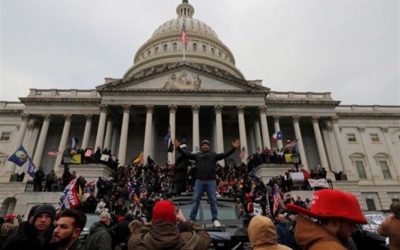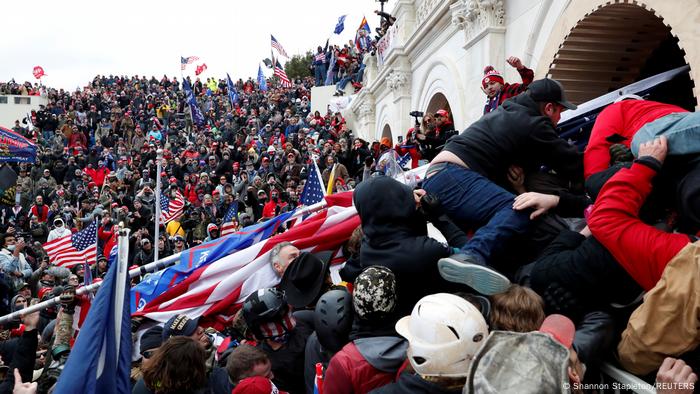Palestinians in the West Bank and Gaza direly need the COVID-19 vaccine.
Published on Wednesday, January 06, 2021
by Common Dreams

A Palestinian child clad in mask due to the COVID-19 coronavirus pandemic stands outside a mosque upon arriving for the prayers of Eid al-Fitr, the Muslim holiday which starts at the conclusion of the holy fasting month of Ramadan, in Gaza City on May 24, 2020.
The media is abuzz these days with headlinessuch as “How Israel Became a World Leader in Vaccinating Against Covid-19.” While the U.S. has so far vaccinated only 1.3% of its population against COVID-19, Israel has already given the vaccine to over 14% of its citizens. In explaining this, the media cites Israel’s socialized medicine, the fact that the country is small but wealthy (allowing Israel to pay $62 a dose, compared to the $19.50 the U.S. is paying), and the heavily digitized nature of Israel’s health care system. But below the headlines celebrating Israel’s vaccination rates lies a far darker story about health inequality.
Israel has a population of around nine million. 20% of Israel’s population are Palestinian citizens of Israel. These people can vote in elections, have representation in the Knesset, and are being vaccinated against COVID-19. But, there are another around five million Palestinians who live under Israeli rule, without rights, and like the rest of the world, are suffering from the pandemic.
Since 1967, Israel’s settler population has ballooned to close to 500,000, with Israeli settler regional councils controlling 40% of West Bank land. Despite the U.S.-facilitated normalization deals with the UAE, Bahrain, and Morocco that occurred during the latter half of the year, that were supposed to have halted Israel’s annexing of the West Bank, 2020 has seen the largest number of settlement unit approvals since the watchdog group Peace Now began tracking in 2012.
Thanks to Israel’s air, land, and sea siege, as well as multiple military assaults on the crowded enclave, there is a severe shortage of medicine and medical equipment in Gaza along with significant poverty and unemployment. Quarantining and maintaining sanitation in Gaza is extremely difficult.
Despite the Palestinian Authority and Hamas supposedly being the official governments of the West Bank and Gaza, Israel is really in charge. Israel controls the borders, currency, central bank and even collects taxes on behalf of the Palestinian Authority (PA). It maintains the right to carry out military operations on Palestinian land and controls the amount of freedom, or lack thereof, that Palestinians are granted. Even in areas like Ramallah, supposedly under the complete control of the Palestinian Authority, Israel reserves the right to enter the city at any time, to close streets and shops, to burst into homes, and to make warrantless military arrests.
Israel’s distribution of the COVID-19 vaccine is far from the country’s only system of inequality. Israeli elections do not include the approximately five million Palestinians living in the West Bank and Gaza. Palestinians in East Jerusalem, while they can vote in municipal elections, cannot cast ballots in national elections, such as the one slated to take place in March (the fourth in two years).
Perhaps Israel’s most flagrant demonstration of having two sets of laws for two groups of people is its court system in the West Bank. While Israeli settlers, residing there illegally according to international law, are subject to Israeli civilian law, their Palestinian neighbors live under Israeli military law. This makes them subject to statutes such as Military Order 101, which bans even peaceful protest.
According to the Oslo Accords, signed in 1993, the Palestinian Authority is solely responsible for the health care of Palestinians in the West Bank and Gaza. However, those deals were part of the vision that contemplated a more complete peace agreement being signed within five years. Almost three decades later, this larger peace agreement still hasn’t happened and Israel has entrenched its settlement enterprise occupation while flouting international law and dodging its moral, legal, and humanitarian obligations as an occupying power. Providing the COVID-19 vaccine to Palestinians is one of these obligations.
Palestinians in the West Bank and Gaza direly need the COVID-19 vaccine. As of January 5, 2021, there were 143,169 active cases and 1,505 COVID deaths in the Palestinian territories. The infection and death rates are climbing dangerously. In a period of just 24 hours, 1,191 new cases and 20 deaths from the virus were announced. The situation in Gaza is particularly worrisome. Gaza suffers from up to 12 hours a day without electricity. Thanks to Israel’s air, land, and sea siege, as well as multiple military assaults on the crowded enclave, there is a severe shortage of medicine and medical equipment in Gaza along with significant poverty and unemployment. Quarantining and maintaining sanitation in Gaza is extremely difficult.
The World Health Organization’s Covax system, aimed at assisting impoverished countries, has pledged to vaccinate 20% of the Palestinian territories. But Covax vaccines don’t yet have the necessary “emergency use” approval of the WHO. Gerald Rockenschaub, head of the WHO office in Jerusalem, said Covax vaccines aren’t likely to be available for distribution in the Palestinian territories until “early to mid-2021.” According to the Palestinian Health Ministry, the territories have been in a financial crisis, leaving them next to no funds to purchase vaccine doses. Even when they were able to find the money, the vaccines they attempted to purchase from Russia in December could not be delivered as Russia determined that they did not have enough doses to sell.
In the first week of 2021, the Palestinian Authority began to inquire if Israel would help them obtain the vaccine. So far, Israeli officials have said that they might offer whatever they have leftover to the West Bank and Gaza after vaccinating Israeli citizens and East Jerusalem Palestinians. If that isn’t medical apartheid, I don’t know what is.

Ariel Gold is the national co-director and Senior Middle East Policy Analyst with CODEPINK for Peace.








